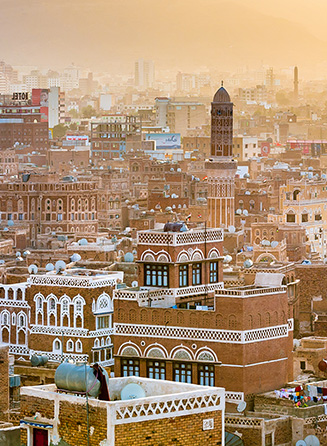Evacuations from High-Risk Locations Call +44 (0)1202 308810 or Contact Us →

Ceasefire Comes Into Force in Yemen’s Port City Hodeidah
18 Dec 2018
The UN-brokered ceasefire came into force at 00.00 on 18 December in the contested city of Hodeidah. Initial reports confirmed that the deadline led to lull in fighting at 3.00am and there are positive signs that fighting is dying down in and around Hodeidah city. A week of talks in Sweden between the Houthi forces and the Hadi government led to an agreement that both sides would redeploy their forces from the city and establish a humanitarian corridor to ensure safe access for international organisations. Since the ceasefire was agreed between the two parties on 13 December, there was an escalation in fighting throughout the governorate, highlighting the fragility of the situation and a potential for a breakdown of the recent agreement.
KEY POINTS
- The UN-brokered ceasefire came into force at 00.00 on 18 December in the contested city of Hodeidah. Initial reports confirmed that the deadline led to lull in fighting at 3.00am and there are positive signs that fighting is dying down in and around Hodeidah city.
- A week of talks in Sweden between the Houthi forces and the Hadi government led to an agreement that both sides would redeploy their forces from the city and establish a humanitarian corridor to ensure safe access for international organisations.
- Since the ceasefire was agreed between the two parties on 13 December, there was an escalation in fighting throughout the governorate, highlighting the fragility of the situation and a potential for a breakdown of the recent agreement.
SITUATION SUMMARY
A week of UN-backed negotiations between delegations from Yemen’s internationally recognised Abdrabbuh Mansur Hadi government and the Ansar Allah (Houthi movement) led to a successful ratification of a ceasefire on 13 December in the port cities of Hodeidah, Ras Isa and Saleef. The agreement will see the Houthi forces withdraw from the ports held areas over the next 14 days and transfer control to a local contingent of forces, opening a humanitarian corridor that will allow safe access for neutral organisations to deliver critically needed aid. A full redeployment of militaries on both sides is expected to be complete within 21 days. A monitoring team, including officials from both sides, will arrive in Hodeidah today to monitor the withdrawal of forces and both sides compliance with the agreement.
The ceasefire that began at midnight on 18 December did not bring an immediate end to hostilities as skirmishes continued in southern neighbourhoods into the early hours, however, at 3.00 local reports confirmed that fighting in the city had stopped. While the ceasefire appears to of held in Hodeidah and near the major ports, fighting has continued within the Al Hudaydah governorate. Local media sources have also reported that shelling resumed this morning in the government held Tuhayta district; 50km south of Hodeidah, additionally, machine gun fire was heard in Al-Za’afaran Village and Al-Shabab City (10km south-east of Hodeidah city).
Opposing military forces are yet to fully disengage; however, there is optimism that the ceasefire will hold, and fighting will continue to deescalate. Travellers in Hodeidah should continue to stand fast within their secure compound, minimising any movement outside secure areas. Continue to monitor local media sources and our alerts for up to date information.
SOLACE GLOBAL COMMENT
The Yemeni government, backed by the Saudi-led coalition, began their military offensive on Hodeidah on 12 June, leading to a break down in critical services and supply chains throughout the port city. Hodeidah has been under the control of the Houthi forces since October 2014 and during this period has become a lifeline for many citizens living in Houthi controlled areas. The port is the main supply route for international organisations transporting aid supplies into the country. With over 75 percent of the population in need of humanitarian support, aid supplies have become critical to the survival of Yemeni communities. The persistent disruption to the port operations, alongside an increasingly dangerous situation in which aid agencies are operating, has led to a near complete breakdown to the humanitarian supply chains. Further to this, international organisations have reported that both the Houthis and the Yemeni government forces have attempted to impede humanitarian access to affected populations, often confiscating aid supplies and restricting movement in certain areas. Fourteen million Yemeni people remain at risk from famine and a recent Save the Children report estimates that over 85,000 children have died from malnutrition since the outbreak of conflict, highlighting the severity of the current situation.
The UN-brokered ceasefire will oversee the withdrawal of Houthi forces and pass control of the port to a local force that would report to a central authority rather than the two warring parties. The ceasefire attempts to demilitarise the city and surrounding area, while ensuring key road links will be opened and protected by a bipartisan force, allowing aid agencies to access communities in need of urgent humanitarian assistance. Within the arrangement, the Central Bank of Yemen will receive the revenue from the port, using the funds to pay government employees and resurrect public service in Houthi held areas.
Since March 2015 and the escalation of Yemen’s civil war, the operating environment throughout the country has become increasingly challenging for all humanitarian organisations working within the country. The most prominent conflict, and the conflict that dominates Hodeidah, is between the internationally recognised Hadi government and the Houthi forces, however, numerous other conflicts are fuelling insecurity and exacerbating the dire humanitarian situation throughout the country. Around 56,000 civilians and combatants have reportedly been killed since January 2016 with this figure growing by around 2,000 fatalities a month. The increase in recent media attention around the humanitarian situation in Yemen has led to several nations currently involved in the conflict seeking a political solution. Saudi Arabia have been a major driving force behind the recent ceasefire.